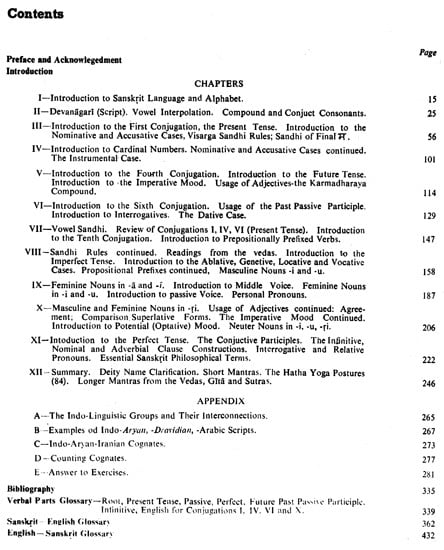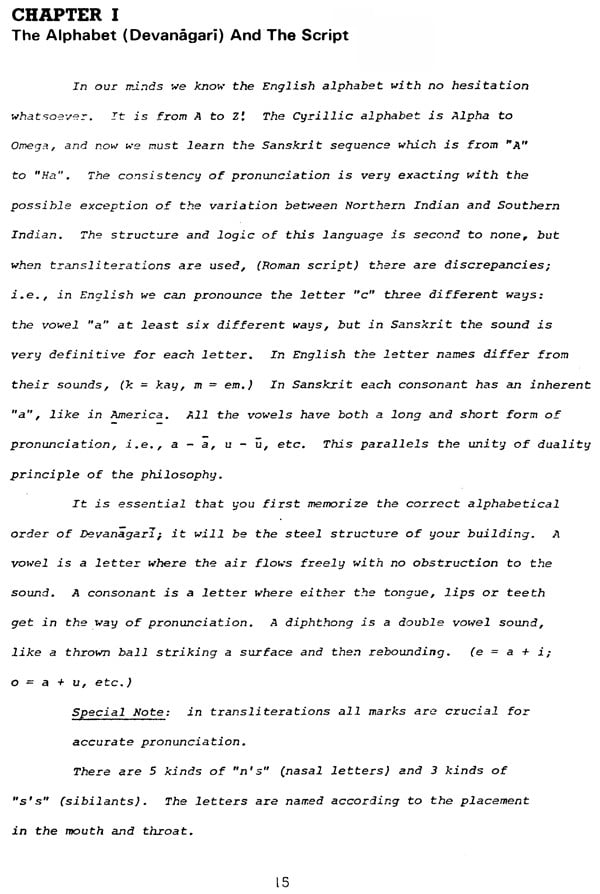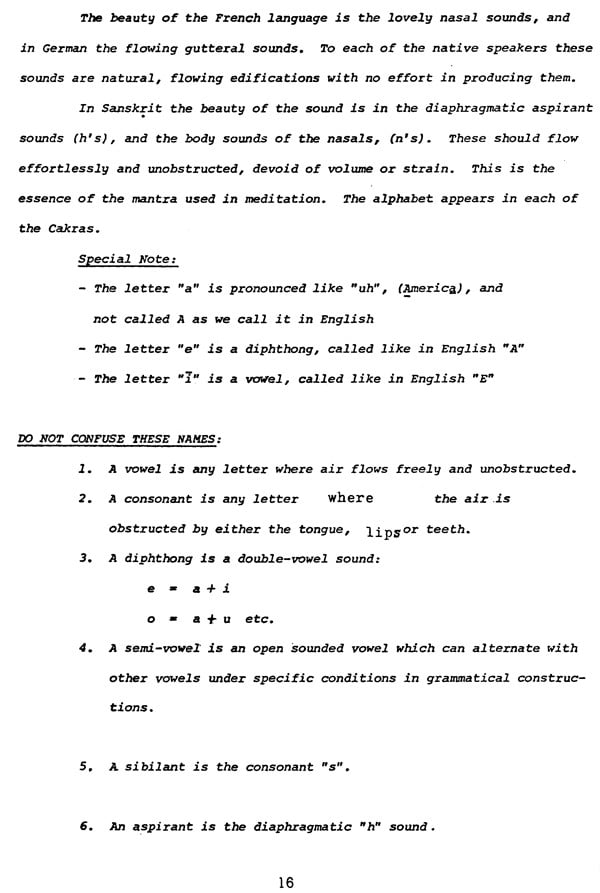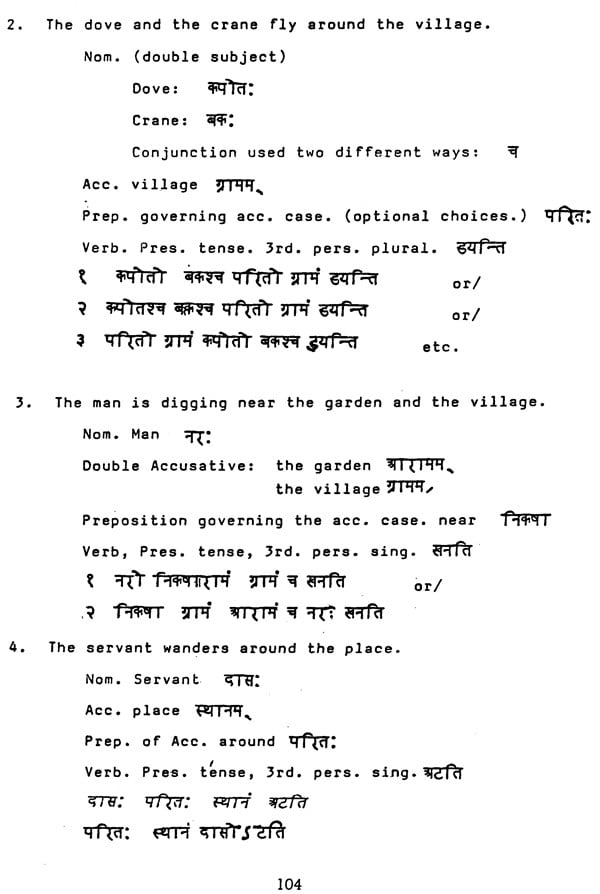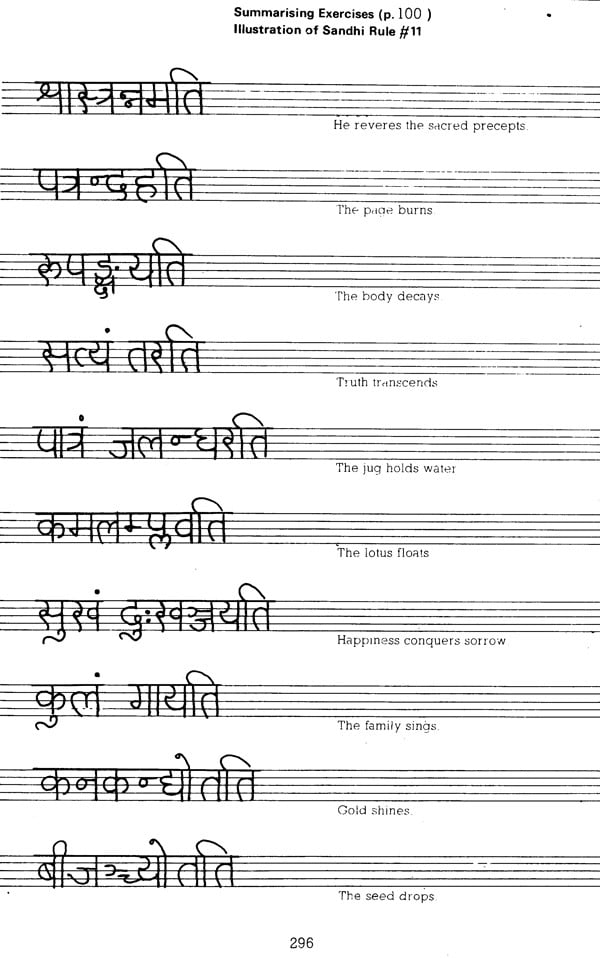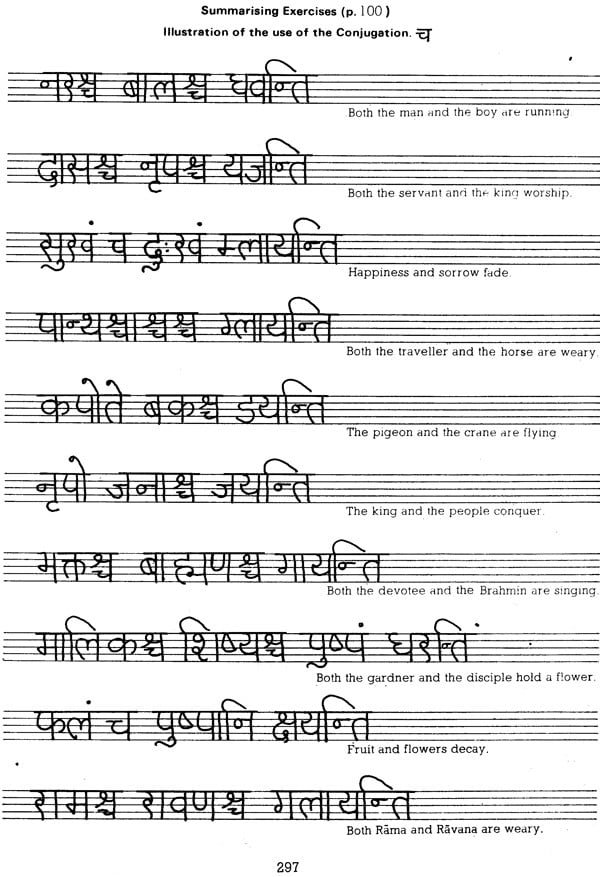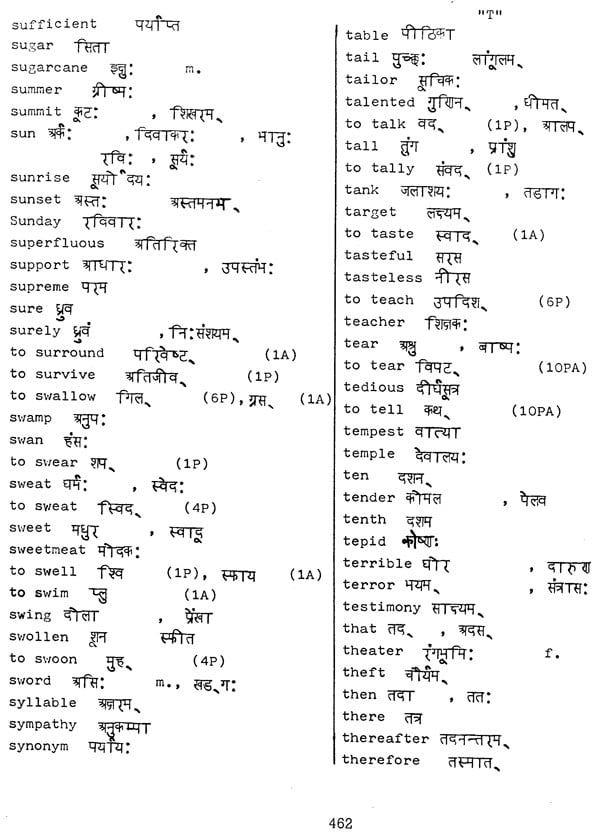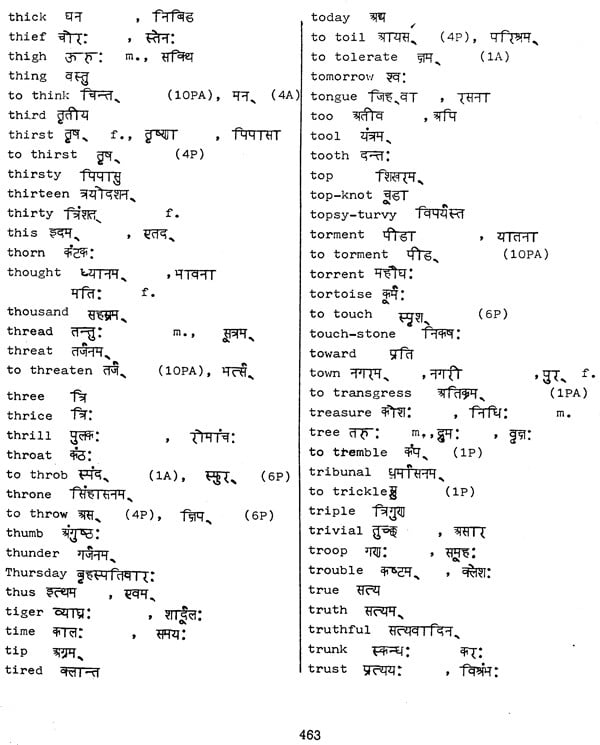
Unfolding The Petals- A New Sanskrit Grammar (An Old and Rare Book)
Book Specification
| Item Code: | NBZ009 |
| Author: | David Teplitz |
| Publisher: | Tulsi Publishing House, Delhi |
| Language: | SANSKIRT TEXT WITH ENGLISH TRA |
| Edition: | 1982 |
| Pages: | 468 |
| Cover: | HARDCOVER |
| Other Details | 11.00 X 9.00 inch |
| Weight | 1.17 kg |
Book Description
His diverse professional experience includes public school teaching in Iowa and South Dakota as well as San Francisco, working with mental patients as a music therapist, and teaching public school in London under Fulbright scholarship in 1961-2. He has taught philosophical courses at the California Institute of Asian Studies and the Institute for Yoga Teacher Education, and has taught the art of meditation for the Yoga Teachers Association, in San Francisco, where he also serves as consultant in music therapy for Antioch College/West.
Dr. Teplitz has written for The Mountain Path and Yoga Journal. He has also made available a 90- minute tape consisting of a Sanskrit phonology guide and group chanting of the Patanjali sutras 1-19, as led by the professor.
The honorific titles that have been conferred on him are: Saingitprem.
by Dr. Haridas Chaudhuri and Naba- prasthanadata, by Sri Tripatti at the Sanskrit University in Varanasi, in 1979.
It is necessary to mention here the Inspired Souls who have also offered inspiration and encouragement. The late George Simon, Ella Tarkman, and Ann Busby all former students. Dr. Melville Herskovits, Professor of Anthropology at my Alma Mater, Northwestern University, Dr. Haridas Chaudhuri, the founder of The California Institute of Asian Studies in San Francisco, Dr. Zarchin , linguistics Professor at the American Academy of Asian Studies in San Francisco where I completed my Doctorate, and the late Dr. Judith Tyberg of the East-West Cultural Center in Los Angeles.
Colleagues Dr. Rammurti Mishra, Tseng Ta Yu, Bishop Shaku from the California Institute of Asian Studies all contributed inspiration to this meager effort, and Bhagavan Sri Ramana Maharshi of Tiruvannamalai, So. India.
Amongst the many students who helped this author with editing and revisions should be included, Dr. Willis Wygant, Gar Trowbridge, Rama Jyoti Vemon, Mandira Haynes, Jeanette Sachs, Michael Joy and Joan Gigiuere. At the University of California Extension in San Francisco gratitude is offered to John McCoy, Ellen Shandalowe, Hiro Hatori and Jean Brewer.
The majority of the final editing was done by my beloved students Mary Lou Weprin and Mary Grigolia, yoga teachers trained in the Iyengar method at the Institute for Yoga Teacher Education in San Francisco.
Ten late Novemher of 1979, Professor Kailuspati Tripattu of the Sanskrit University at Varanasi examined an early manuscript and offered many wonderful suggestions. Dr. R. S. Kelkar of the Sahitya Akademi in New Delhi granted per- mission for the inclusion of examples of the various Indic Scripts which will be found at the end of the text. This text is a synthesis of methodology culled from many academic sources and monumental texts of the Divine Language.
The Sanatana Dharm (Indic Philosophy) is perhaps the most intensified reason why so many students in the Occidental countries want to learn Sanskrit.
Due to its inner-non-verbal implosive meanings of the philosophical terms and ancient sacred texts, one will find this text a gentle means for feeling the concepts and not having to rely upon translations. This author has synthesized the learning of the grammatical constructions with the arts of meditation and mantra and cross references to the awakening of Self-Realization. One can feel the energy of the syllabic constructions and slowly organically grow with a satisfaction of accomplishment.
This text is not meant to be an all inclusive academic finality, but serves as a beginning for comprehension of both the language and the philosophy.
The approach is step-wise with 'organic-growth,' for change. True learning changes one! My premise of 'Dedication, Discipline and Detachment,' compliments the philosophical intention. It includes exercises of both Sanskrit to English and English to Sanskrit with an appendix of the answers to help guide the student.
Also at the end is a series of intensely interesting glossaries of a comparative nature to expand the students appreciation.
The Aryan people migrated from Bactria, Sognia, and the highlands of Tibet to the Indian subcontinent via the northwest passage. Their language is considered by scholars to be the elder sister of Greek. At one time all people may have spoken a common language, and this could have been it; Sanskrit, the language of the Gods, "Devanagari."
Sanskrit has words for the higher teachings of the inner mysteries of the Soul and Spirit; the many after- death states, the origin and destiny of worlds and of man, human psychology, and the levels of human consciousness in and above the human stage, and a storehouse of philosophical and religious terminology. Every term is a living symbol of one of the Eternal Vibrations of Nature. It is a revealed language scholastically substantiated to around 3,000 B.C., and even older within the ancient Vedic texts. Comparative philologists give indisputable proof of the fact that the ancestors of the Hindus, Iranians, Greeks, Slavs, German, and Celts in far distant ages spoke one language and dwelt together as a single people. As there is no language so perfect in its forms and with so many branches, Sanskrit must be regarded as the oldest of all existing literary languages.
As Romance languages have great determinants in Latin and Greek, Sanskrit has a three-fold basis;
Indo-Aryan Indo- Iranian Indo-Sine tic.
The Devanagari script in India has been the germ force of Hindi, Punjabi, Assamese, Marathi, Gujarati and Bengali script developments in the North; the native Dravidians of the South developed Tamil, Malayalam, Oriya, Telugu and Kannada; and during the 1300 years of Islamic occupation of this sub- continent, the Arabic script was adapted to Urdu, Sindhi and Kashmiri.
Out of the 2,000 primitive roots, each representing a mathematical energy form, the Sanskrit language was developed by means of affixes, prefixes, suffixes, and so on. It was continued on by the word of mouth tradition of the Brahmins, and was not written down until the Sage Panini set forth the grammatical writings and constructions of the Revealed Language in 3996 rules (circa 500 B.C.). Unlike English it is a preserved from, as meaningful today as it was in ages gone by. The early translators could not help but rub off their own beliefs as guidelines for translations, and in the West, Greek and Latin served as a very profound basis for language expressions. To try to translate such common words as dharma, karma, bhakti, yoga, etc., would involve the comparative comprehension of the translator's understanding. The ancient Sastras, or scriptures, eternally spoke of the uniqueness of Monotheism, oneness, and non-dual attainment. In India religion and philosophy are not divorced; they are a total interplay of inner attainment and development for action in this lifetime. Sectarianism is as prevalent in India as elsewhere, but this is perhaps the one reason one would want to learn Sanskrit. The name Sanskrit itself means "highly-polished" and the actual script is called Devanagari, the writings of the city of the Gods! It is an inner-implosive feel-language, non-verbal and highly sophisticated. Each letter of the alphabet has a numerical vibratory force which allies with the rhythmic vibrations of the human body-blood pressure, respiration rate, and so on. When the sound of a letter .is made either vocally or inwardly, the vibratory force is activated, especially in meditation. Within each Chakra there is a lotus, and on each petal appears one distinct letter of the alphabet. For 'meditation purposes one will choose a phrase, sutra, mantra, or merely a letter of the alphabet, which will help the psychic subconscious to move in the realms of Cosmic contact. It is this slow process which leads to Self-Realization, enlightenment, and samadhi. This is described definitively in the Vedas. In A 1] M, "A" is the first letter of the alphabet, "U" signifies the second part of the Trinity-"Brahma- Vishnu-Siva," and "M" represents the total body vibration for life sustenance.
Throughout time, the earth has been in a constant state of change, always showing the effects of the interplay of Cosmic forces. Even now, the process is going on; volcanoes spring up to form new mountains and islands, and cities are leveled by earthquakes. In the same way, cultures undergo a natural process of evolution. The subcontinent of India has been a captive nation for centuries at the hands of the Mongols, Arabs, French, Portuguese and British. Despite these waves of foreign cultures, the ancient Shastras and Sanskrit texts preserved such concepts as the unity of the man, Monotheism, Non-Violence, and Self-Realization. The consistency of pronunciation over the eons of time is indeed the greatest facet of the strength of this language. The power of the pure vowel is very consistent, hence the power of the mantras.
In this day and age, the shrinking distances, rapid communication and synthesis of religious and moral concepts has brought about a need for a textbook which can help guide the interested students of Indic philosophy, Buddhism, and Other Eastern studies. Having felt the personal necessity of this need. I have evolved a method for studding Sanskrit which painlessly unlocks the many doors to the ancient scriptures. My idea of true learning is that of "organic growth and change." Learning Sanskrit is a slow process with no time element involved from years of classroom teaching and is meant to be an introduction, and by no means a total comprehension.
In commencing your independent study of this ancient language you must keep in mind that it is an art-form of script writing and dedications to inner development as well. The Sanskrit script will have slight variations in appearance between examples, so it is important to learn accurately the specific stokes and points (nubs) to look for when either reading or writing. It is a study of love and fulfillment of inner spiritual growth. I will inter-relate the philosophical term of the sacred texts with the techniques of grammatical construction. My methodology consists of three specific premises:
I. Discipline. An earnest attempt to slowly and organically learn each step by setting aside 30 to -10 minutes each day, totally undisturbed with full concentration on the work it hands. You must grow inwardly and outwardly, fully absorbing each bit of information. As you communicate in your own tongue, Sanskrit should flow just as freely and comfortably. It is delightful task, and always remembers that the language and the philosophy are one.
2. Detachment During your designated time of study, avoid extraneous mental activities. Do not try to memories abstractions. but lovingly centre your mind on this one and only task so that each minute of study receives IOO'/. concentration .
3. Devotion. Your organic growth is a dedication to clarifying and opening the in-depth philosophy in the energy and consciousness of the non-verbal. highly-polished art-form of Divine communication.
Gradually abandons the Roman script and permit the brain its freedom in a new dimension of higher conciousness. After all, Sanskrit has been going on for many centuries. so why rush the process? You can and will learn. in the one-wontedness, joy for the greater spiritual fulfillment. The inner joy and calm is gratifying and permanent. True learning means organic change with no worry or pressure of time. When you feel the meanings of the words, no translation in necessary!
Book's Contents and Sample Pages
